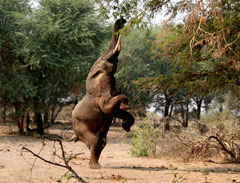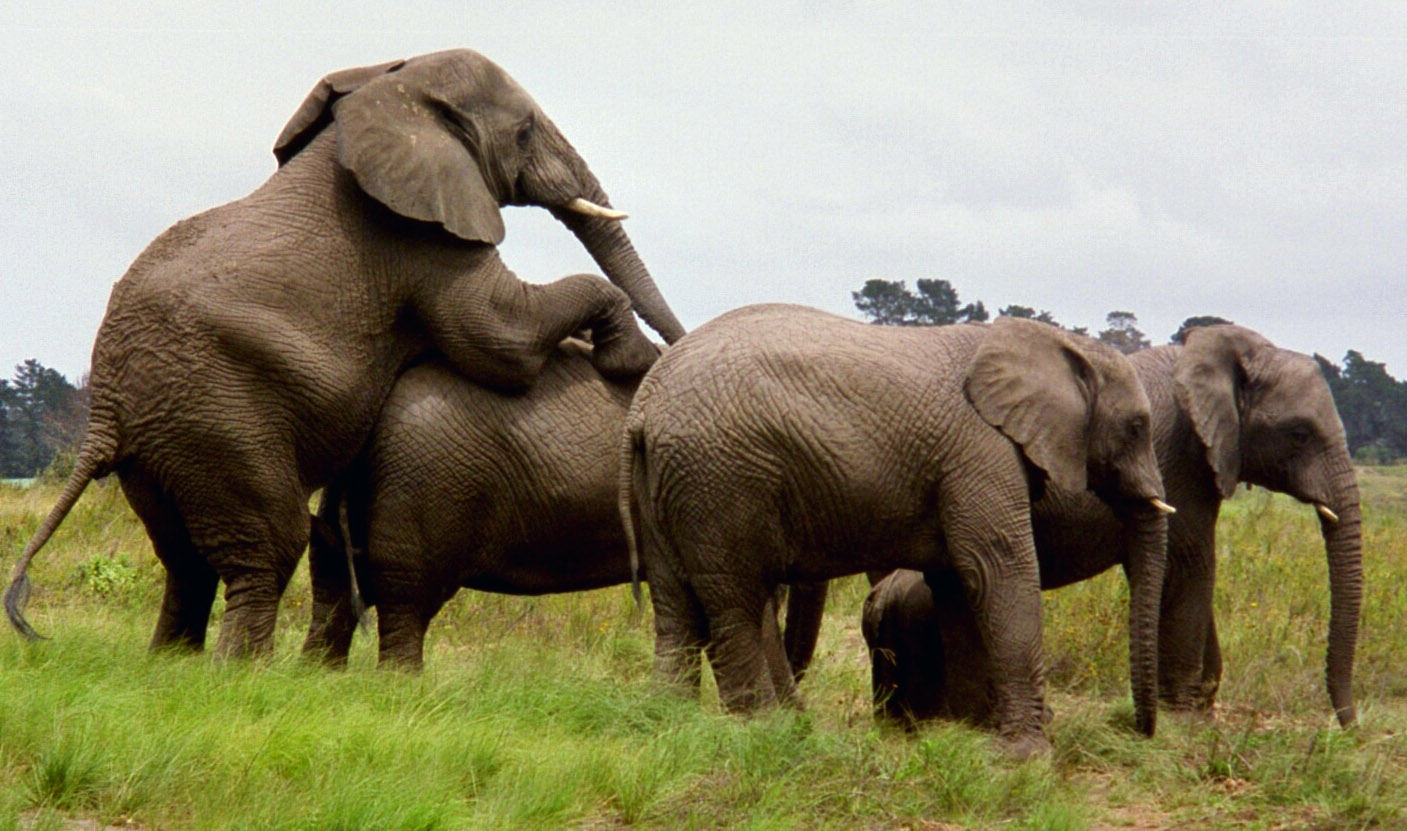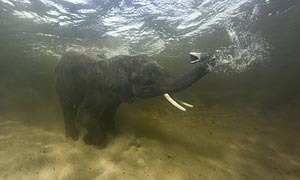Loxondanta africana is in the domain eukarya because it is eukaryotic.This means its cells contain membrane-bound orgenelles. The kindgom is animalia, which means it is multicellular, heterotrphic, and the cells lack a cell wall. The african elephant lyes in the phylum chordata because it has tissues, and a coelom. Along with having these two atrabutes, it is bilaterally symmetrical and also possesses a dorsal,tubular nerve cord and a postanal tail. It lyes in the class Mammalia because it possess hair which is made of keratin, the hair provides insulation. It is endothermic (the majority of the heat energy is used to maintain their high body temperature). It has a 4 chamber heart. They also have mammory glands that are used to produce milk to nourish their young. Their diaphram is a muscle that seperates the thoracic cavity from the abdominal cavity. They have an extended gestation period, well developed brain, and teeth which are imbedded in the jaw bone and come in a variety of forms. The order Proboscidea, has great size, nose and upper lip form proboscis, upper incisors are tusks, thick skin, and scant hair. the elephant falls in the family Elephantidea because it is a large mammal that is within the order Proboscidea. the scientific name is Loxadonta africana. It is the largest land mammal (Africa's true kind of beasts). Back to Top
|
 Photo by Elephant Country Web |
General Description:
L. cyclotis Smaller of the two. They have Downward-pointed tusks and smaller rounded ears.
Back to Top
Elephant Eats:

Back to Top
References:

Work Cited
"Africa." Oakland Zoo. 1997. 26 Mar. 2007
"African Savanna." National Zoological Park. 2002. Smithsonian. 20 Mar. 2007
Col, Jeananda. "African Elephant." Enchanted Learning. 1999. 25 Mar. 2007
?Elephant." African Wildlife Foundation. 20 Mar. 2007. 22 Mar. 2007
"Elephants:Facts About Elephants!" African Elephants. 2004. Indianchild.com. 1 Apr. 2007
Estes, Richard. "Loxodonta Africana." Nature Wild Life. 24 Mar. 2007
Künkel, Reinhard. African Elephants. New York City: H.N. Abrams, 1999. 12-95.
Norwood, Lindsey. "Loxodonta Africana." Animal Diversity Web. 2002. University of Michigan Museum of Zoology. 21 Mar. 2007
Ross, Diane C. "Life of an Elephant." Pbs. 23 Mar. 2007
Ross, Doran H. Elephant : the Animal and Its Ivory in African Culture. Los Angeles: Fowler Museum of Cultural History, University of California, 1992.
Siller, F.c., and R.m. Meyler. Elephants, Ancient and Modern. London: Studio Vista, 1968. 96-131.
Winkler, Peter. "Big Talkers." National Geographic Sept. 2001. 1 Apr. 2007
Wing, Larry D., and Irven O. Buss. Elephants and Forests. Washington: Wild Life Society, 1970. 25-35.
Back to Top



